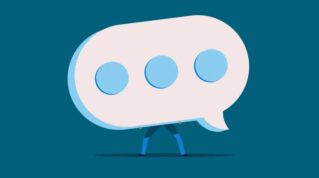Pupils taught by Teach First recruits scored marginally better GCSE results, research suggests, but the staff are more likely to leave the profession and fewer are now in shortage subjects.
Two reports by the National Foundation for Educational Research (NFER) – commissioned by the teacher training provider to mark its 20th anniversary – were published on Wednesday.
Analysis of the impact of Teach First includes schools that recruited trainees for the first time between 2012-13 and 2018-19.
Separate research on the progression and retention of the charity’s alumni includes those who trained between 2011-12 and 2017-18.
Researchers also drew on the school workforce census, initial teacher training performance profiles and the national pupil database.
Teach First was set up in 2002 with the aim of recruiting “high-potential” graduates and career changers to disadvantaged schools.
Here are the key findings.
1. Marginal boost in GCSE grades
The NFER found that GCSE attainment in secondary school departments that recruited a Teach First trainee was “statistically significantly higher” than in similar departments in comparison schools.
Researchers said while the difference was small (-0.01 standard deviations), this “likely reflected a direct impact of Teach First teachers on the outcomes of the pupils they taught”.
Karl Edwards, the charity’s director of strategy and impact, added: “It shows our teachers have a positive impact on young people’s attainment from very early in their careers, helping them to get the grades they need to unlock their future.”
However Dave Thomson, chief statistician at FFT Education Datalab, pointed out that -0.01 standard deviations in a secondary school maths department would be equivalent to 1 in every 50 pupils getting one grade higher.
The study used large datasets, which meant “even tiny differences will be statistically significant”, he added.
The extra cost of Teach First must also be taken into account, although NFER noted it was “out of scope” for its evaluation.
Previous studies found the average cost of initial teacher training – including costs to government and schools – was £23,000 in 2016. However, for Teach First, the cost was £38,000 – which was £14,000 more than any other training route.
And when looking at performance outcomes across the whole school level, researchers found little difference in GCSE attainment.
2. Pupils more likely to attend uni
Recruiting Teach First teachers was also associated with an increase in the proportion of pupils attending university, compared to similar comparison schools.
The NFER said the estimated impact was largest three years after a school became a Teach First school, where the proportion of pupils who ever attended university increased by a “statistically significant” 2.5 percentage points more than comparison schools.
But there were caveats – including that university attendance typically occurs several years after pupils sit their GCSEs. The potential impact of Teach First teachers may also “fade over time”.
Meanwhile, the difference in the proportion of pupils attending university between Teach First and similar comparison schools was already shrinking in the three years prior to schools recruiting Teach First teachers.
3. Shortage subject recruits has fallen
While Teach First aims to recruit disproportionately for teacher shortages in STEM subjects, NFER found its recruits had “gradually become somewhat” similar to teachers training through other routes.
In the early 2010s, Teach First teachers qualifying in maths accounted for nearly 30 per cent of its secondary cohorts. But this declined to 18 per cent in 2018-19.
This compares with 14 and 13 per cent of teachers who trained through higher education (HE) and school and employment-based routes respectively.
Teachers in science subjects accounted for around one-fifth of its secondary cohort in the early 2010s, but this declined to 16 per cent by 2018-19.
This compares with 20 per cent of secondary teachers who trained through HE and school and employment-based routes.
4. Teach First trainees are promoted faster …
The charity also wants trainees to make rapid progression into leadership positions.
Three years after their newly qualified teacher (NQT) year, 50 per cent of Teach First teachers were in middle leadership positions.
For similar teachers who went through university and school or employment routes, the proportions were 36 and 40 per cent, respectively.
Teach First teachers were also “considerably” more likely to be in senior leadership roles earlier in their careers.
Three years after their NQT year, the proportion of its teachers in senior leadership roles was 12 times higher than for similar teachers who trained through HE and three times higher than those who went through school and employment-based routes.
But NFER pointed out that this could be linked to a larger proportion of Teach First teachers being based in the capital and in disadvantaged schools, where progression rates are higher.
Faster progression was mirrored by bigger pay packets. From one to seven years after their NQT year, Teach First teachers tended to earn more than similar teachers.
5. … but progression rates are declining
Researchers add that in more recent cohorts, however, the proportion of Teach First teachers teaching in middle or senior leadership has declined.
It found that 36 per cent of those who began their training in 2016-17 were in such positions three years after gaining qualified teacher status (QTS).
This compared to 47 per cent of those who began their training in 2008-09.
6. Teach Firsters way more likely to quit profession …
The retention rate for Teach First teachers one year after completed their NQT was 69 per cent. This was 87 and 88 per cent for teachers trained through HE and school and employment-based routes, respectively.
But the report said this was “somewhat” predictable given Teach First’s two-year training programme, compared to one year in other routes.
The average difference in retention rates also “masks” improvements in differences among more recent cohorts.
The retention rate for Teach Firsters who began training in 2011-12 and were still teaching a year after their NQT year was 50.6 per cent.
This compared to 67 per cent for those who trained through HE and 72.3 per cent of those who trained through school and employment-based routes.
The proportion of Teach First teachers who began training in 2017-18 and were in teaching a year after their NQT year was actually four percentage points higher than for those who began their training in the same year through HE.
However it was still eight percentage points lower than those who trained through school and employment-based routes.
Edwards said the charity will research “how we can continue to strike the right balance of long-term retention with bringing the top new talent into teaching in schools in disadvantaged communities”.
7. … and those who stay more likely to move school
Teach First teachers were also more likely to leave their school. The proportion of those in the same school the year after their NQT year was 64 per cent.
For HE and school and employment-based routes, the proportions were 87 and 86 per cent respectively.
And just 80 per cent of the charity’s teachers were in schools in the same region a year after their NQT year, compared with 96 per cent of teachers trained through other routes.
However nearly three-quarters (73 per cent) of those moving to a different school a year after their NQT year moved to another disadvantaged school. Researchers said this showed trainees remained “committed” to the Teach First mission.
This compared with 63 per cent of similar teachers who trained through HE and 61 per cent who trained through school and employment routes.
Yet of the Teach First teachers who moved the year after their first qualified year, nearly half (49 per cent) moved to a school with a higher Ofsted rating.
The same figures for those who trained in HE and school and employment routes were 38 and 31 per cent, respectively.
















Teach First like many initiatives suffers from the Hawthorn effect. It’s never going to put right the failure of the system that’s not moved into the 21st Century.